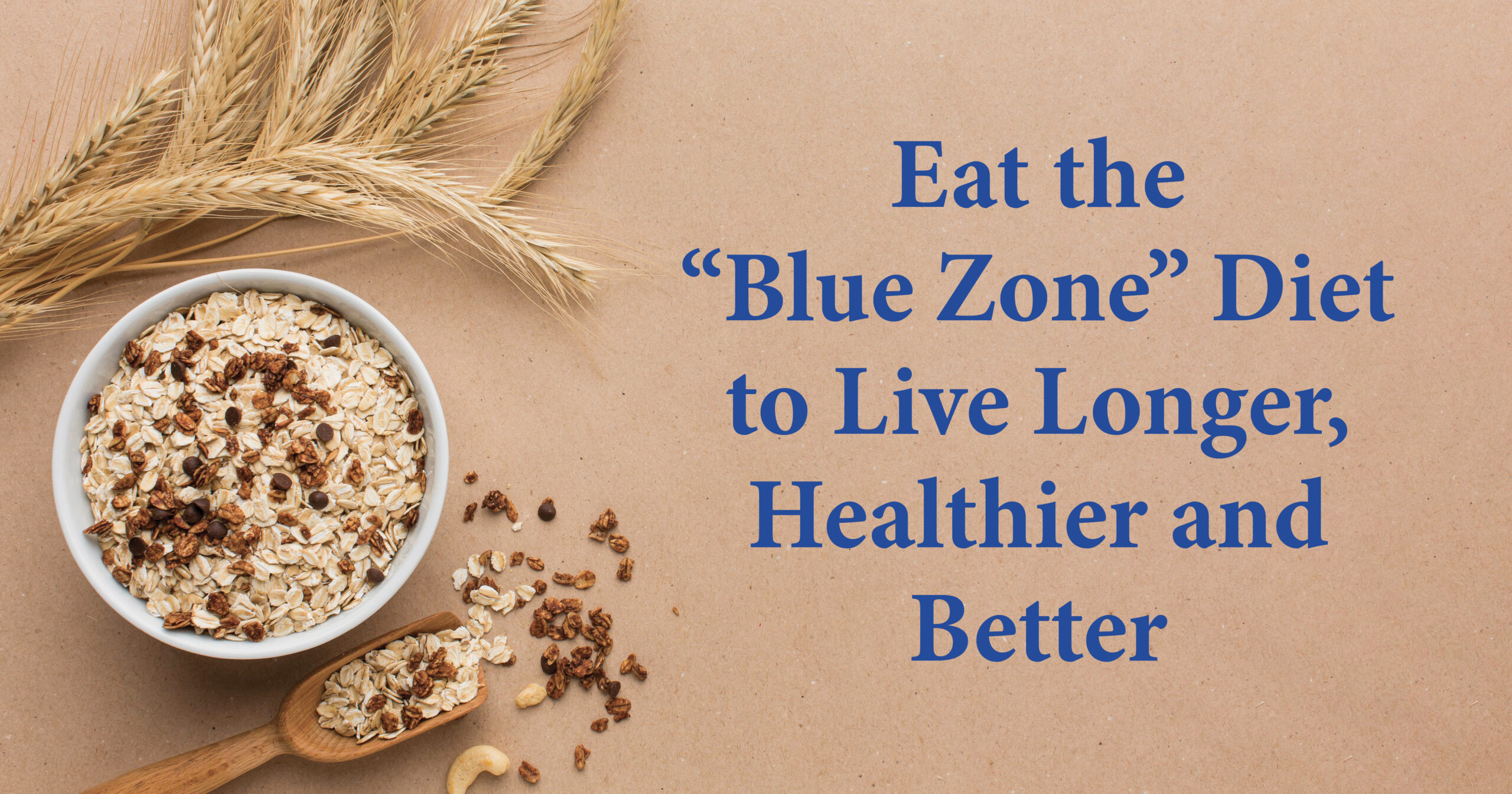Are you looking for a way to improve your overall health and well-being in 2024? Look no further than the “Blue Zones” diet! This diet is primarily vegetarian and is rich in whole grains, legumes, fruit, vegetables and minimally processed protein sources.
We’re spotlighting the world’s Blue Zones in this series, because we all want to live longer, happier and healthier lives. We can learn from the people who live in “Blue Zones,” places like Okinawa, Sardinia and Loma Linda, Calif. It’s more than just nutrition — it’s a way of life that anyone can participate in and gain the health benefits. Follow the Blue Zones philosophy on food, physical activity, socialization and spirituality and you may just find yourself living to 100.
What is the “Blue Zone diet”?
The Blue Zone diet is rich in fruits, vegetables, whole grains and legumes. It’s low in processed foods, red meat and added sugar. This way of eating has been shown to reduce the risk of chronic diseases and certain forms of cancer. The Blue Zone diet can also help you improve your overall health and well-being, giving you more energy, better sleep, and a healthier weight.
How do you eat the Blue Zone diet?
- Eat a plant-based diet.
- Choose whole grains over refined grains.
- Limit your intake of red meat and processed foods.
- Choose healthy fats, such as olive oil, nuts and seeds.
- Limit your intake of added sugar.
- Drink plenty of water.
The science behind the “Blue Zone” diet
One study published in the Journal of the American Medical Association (JAMA) found that people who followed the Blue Zone diet for six years had a 23% lower risk of dying from heart disease. They also had a 13% lower risk of dying from cancer. Another study, published in the journal The Lancet, found that people who followed the Blue Zone diet had a 20% lower risk of dying from all causes.
Foods you should consider on the “Blue Zone” diet
Some of the foods that are recommended on the Blue Zone diet include:
- Fruit: A great source of vitamins, minerals and antioxidants. They can help reduce the risk of chronic diseases such as heart disease, stroke and cancer. Consider eating more blueberries, strawberries and bananas.
- Vegetables: Another important part of the Blue Zone diet. They are a good source of vitamins, minerals and fiber. Vegetables can also help reduce the risk of chronic diseases such as heart disease, stroke and cancer. You can adopt leafy greens, cruciferous vegetables like broccoli, cauliflower and kale and alliums such as onions, garlic and shallots.
- Whole grains: A good source of fiber, vitamins and minerals. They can help reduce the risk of chronic diseases such as heart disease, stroke and Type 2 diabetes. Focus on brown rice, quinoa, oats and farro (whole emmer wheat kernels).
- Legumes: An excellent, plant-based source of protein for healthy meals. Whether it’s beans, lentils or pulses, you’ll find that these inexpensive and nutritious protein powerhouses help make your diet healthier.
- Fish and lean meat: In the “Blue Zones,” not everyone is a vegetarian — but people primarily eat fish and lean meat, similar to the Mediterranean diet.
- Plant-based fat sources: Consider using olive oil rather than butter, lard or other saturated fats in cooking and seasoning.
Foods you should avoid on the “Blue Zone” diet
In the Blue Zones, people avoid certain foods that are simply unhealthy. To reap the full benefits, consider avoiding:
- Processed meat, such as bacon, sausage and hot dogs
- Fatty meats, like highly marbled beef and pork
- Highly refined grain products like white bread, white rice and pasta
- Excessive amounts of unhealthy saturated fats, whether butter, lard or fatty meats
- Artificial sources of trans fats like partially hydrogenated oils
- Drinks with added sugar
Live longer and make dining a pleasure
Are you interested in adapting the “Blue Zones” approach to living? Learn all about how you can enjoy living longer and healthier at a Westminster community — find the community nearest you on our website today.


